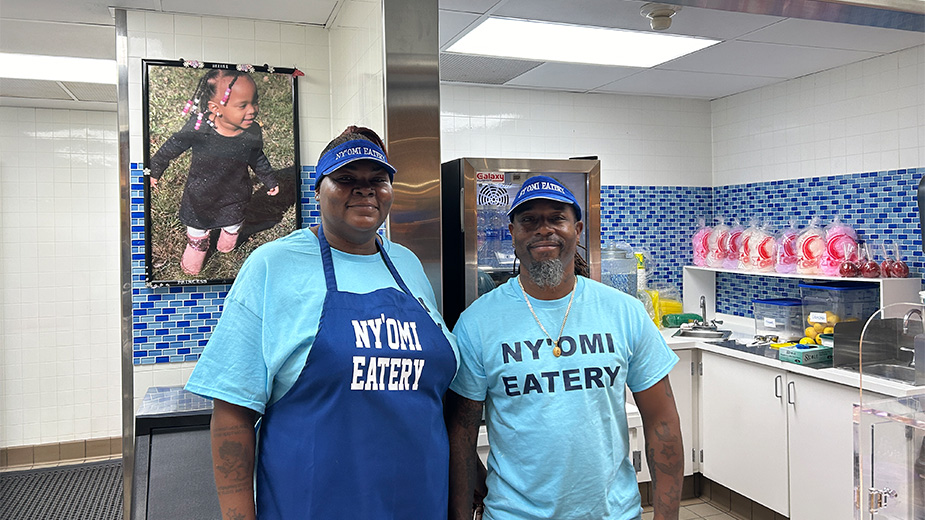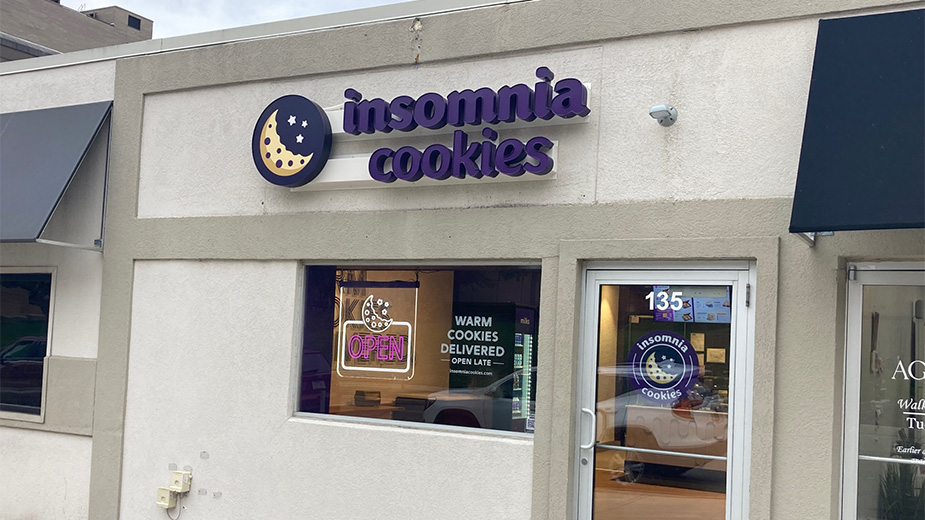Honey Production Buzzes in the Mahoning Valley
YOUNGSTOWN, Ohio – Nate Wilson was a science teacher at the Mahoning County Career and Technical Center several years ago when he and a couple of friends decided to try their hand at making wine and beer.
Eventually the group decided it wanted to make something different – mead, which is made from fermented honey.
“The first time I ever tasted mead was the first time I ever made mead,” Wilson says.
Wilson, now co-owner of Woodland Cellars in Hubbard, says his first taste of mead was an eye-opener. Not only did it bridge the gap between wine and beer. He found it to be a great marketing opportunity.
“If you put a bottle of wine on a shelf, you’re one of a thousand in any general retail [store],” he says. “If you put a bottle or can of beer on the shelf, you’re about the same. Mead, especially at that time, was relatively rare.”
Even more rare than finding a variety of mead was finding an original-style mead that was fermented honey without any other ingredients, Wilson says.
While the variety of mead brands has increased over the years, very few are still made in the traditional way.
Although Wilson opened Woodland Cellars in 2018, his Eye of Odin mead has been in production for nearly 10 years. Wilson and his wife, Dani, also own the Woodland Estates winery in Liberty Township.
“The first batch was a five-gallon bucket way back in 2014,” he says. “Then it stepped up to the 15-gallon demijohns, then to the 80-gallon tanks, and then to the 160-gallon tanks and 250-gallon tanks.”
Wilson gets the honey from McCune Family Apiaries in Auburn Township in Geauga County. He takes home between 300 and 900 pounds of honey per trip, which he makes three or four times a year.
He has 160 to 250 gallons of mead fermenting at all times. During the winter, he increases production on spiced meads, using cinnamon, elderflower, vanilla bean and other flavorings.
Wilson says making mead can take anywhere from three months to a year and a half.
In a typical year, Wilson produces around 10,000 gallons. About 5.3 bottles are made from each gallon.
“The mead making process is very similar to making wine,” he says. “Obviously, you’re starting ingredients are different. Wine is made from grapes [and] honey wine is made from honey. But it’s named mead.”
Wilson says the flavor profiles of pollinated honeys are at least as varied as those of the types of grapes used in wine making. He has made about 20 varieties of mead throughout the years.
“It is just another part of the equation that we get to play with when we are figuring out flavor profiles,” he says.
Local Production
Producing mead here wouldn’t be possible without local honey production.
Bruce Deafenbaugh, president of the Columbiana and Mahoning County Beekeepers Association, has been working with bees for almost 30 years. The group now has about 90 members.
“We have more people raising and being concerned about the bees,” he says. “We have a lot of young beekeepers that want to learn how to take care of bees.”
Deafenbaugh says there are several reasons to buy local honey, including support of local businesses and combating allergies.
“If you have spring allergies, buy spring honey. If you have fall allergies, buy fall honey,” he says. “It’s just like a flu shot, which will help build up your immune system.”
Deafenbaugh says the darker the color of honey, the richer in antioxidants it is.
“I take a spoonful every day,” he says. “It’s a natural antibiotic.”
Travis Watson, beekeeper and owner of The Bee Man in Canfield, says his grandfather began the business as a hobby. Over time, people began to call him to collect honeybees from their homes.
“He recognized there was a business opportunity and expanded into those other areas,” Watson says.
Watson started working with his grandfather when he was 15 years old, eventually taking over the business in 2018.
About 75% of the business has become exterminating yellow jackets, wasps and bald-faced hornets, Watson says. The other portion deals with honeybees.
In addition to producing honey from his hives, Watson says he collects unwanted swarms from local properties and redistributes the bees to the other beekeepers in the area.
“There are a lot of different types of bees and we learned how to take care of just about everything,” he says.
Watson has seven hives. He sells honey and occasionally makes candles with the wax for giveaways or gifts.
Each hive makes an average of about five gallons of honey per year, Watson says.
He produces between 25 and 35 gallons of honey a year. He sells it largely to his customers who follow him on Facebook.
“A lot of normal store brands of honey are cut with corn syrup,” Watson says. “Global honey consumption is much higher than global honey production and what a lot of those store brands market as honey is half honey [and] half corn syrup.”
Stores also carry locally made honey, he points out. The purity of any container of honey can be confirmed by checking the ingredients on the label, Watson says.
Scaling Up Production
Lori Mowad, owner of Let it Bee Honey, has been beekeeping for about 10 years. She began as an educator at Mill Creek MetroParks, where she learned about beekeeping.
Mowad now has 34 beehives on five properties, including some on local farms where they are used to pollinate crops.
“It has evolved from buying packaged bees to collecting swarms, to learning how to make queens and making them survive in the winter,” she says.
Because of the mildness of last winter, Mowad says there wasn’t a strong loss of hives this year. However, there has been an increase in swarming.
“When they swarm, the queen leaves and takes half of the bees with her,” she says. “When they do that, you can multiply your hives very quickly.”
Mowad says bees need 50 to 70 pounds of honey to survive in the winter. Anything over that amount can be harvested.
“With the beehives, we get not only honey, we get different varieties [ranging from] spring honey, which is very clear, to dark honey, which is in the fall,” she says.
In addition to honey, Mowad says she uses the wax to make candles, lip balm, soap, lotion, other skin products and bee balm to prevent moisture from getting into wooden cutting boards.
Mowad also makes honey varieties infused with lavender, oranges, lemons, cinnamon, hot peppers and other items.
“We grow the hot peppers ourselves and dry the peppers,” she says. “We use three different types of peppers to get that hot flavor.”
Mowad says her business sells hundreds of pounds of honey each year.
Pictured at top: Nate Wilson, owner of Woodland Cellars in Hubbard, holds a bottle of his “Eye of Odin” mead.
Copyright 2024 The Business Journal, Youngstown, Ohio.



